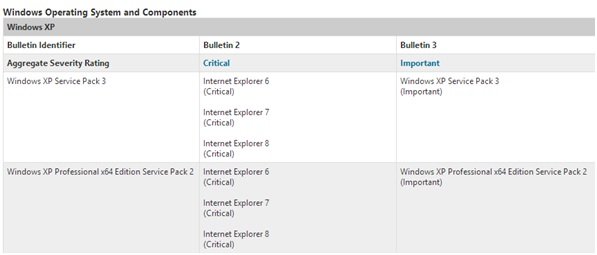Microsoft via its Security Bulletin Advance Notification announced that it will be shipping out updated versions of the Microsoft Windows Malicious Software Removal Tool, security, Non-security and high-priority updates, this Tuesday, 8th April. 8th April is also the day Microsoft will stop supporting Windows XP and Office 2003. It is thus likely that this will be the last batch of updates that Microsoft will push out to Windows XP machines.
Two of the four security patches are tagged as ‘Critical’ by Microsoft, which is the most severe threat rating given by Microsoft. On the other hand, the remaining two security patches are marked as ‘Important’. The security bulletins for this month are summarized as follows in order of severity.
Regarding the severity, Microsoft mentioned at the Security TechCenter that,
“..This advance notification provides a number as the bulletin identifier, because the official Microsoft Security Bulletin numbers are not issued until release. The bulletin summary that replaces this advance notification will have the proper Microsoft Security Bulletin numbers (in the MSyy-xxx format) as the bulletin identifier.”
Along with this information Microsoft also declared a list of security patches that a user may need to install. These lists are segregated as per the operating systems; which include Windows XP, Windows Server 2003, Windows Vista, etc, as well as Internet Explorer 6 | 7 | 8.
The list doesn’t end here. Different Microsoft Office Suites, Software, Microsoft Office Services and Web Apps are also listed here, along with the patches that require users’ attention. Again, just like Windows XP’s security patches, these updates are also termed as ‘Critical’ or ‘Important’, based on their severity.
The bulletin is released every month through which Microsoft provides the Microsoft Security Bulletin Advance Notification Service. This kind of advance notification helps Microsoft’s customers plan for effective deployment of security patches. The Bulletin Advance Notifications include information about the number of new security patches being released, the software affected, severity levels of vulnerabilities, and information about any detection tools relevant to the patches.

Leave a Reply